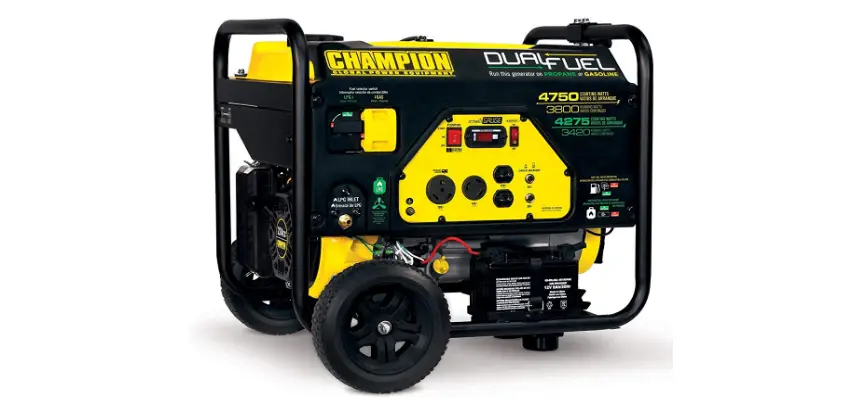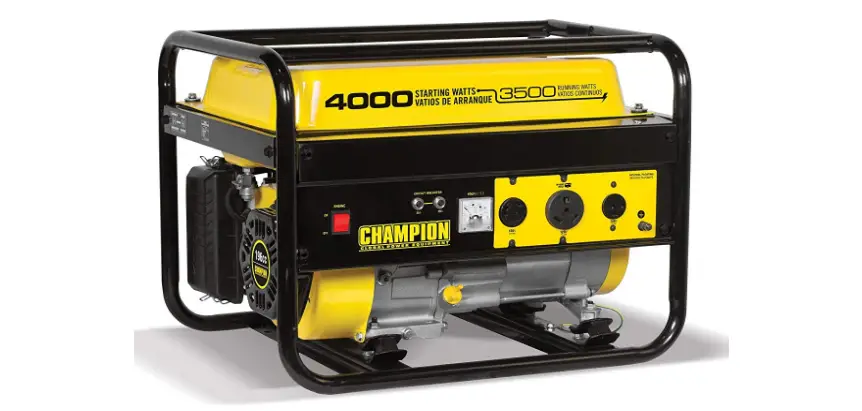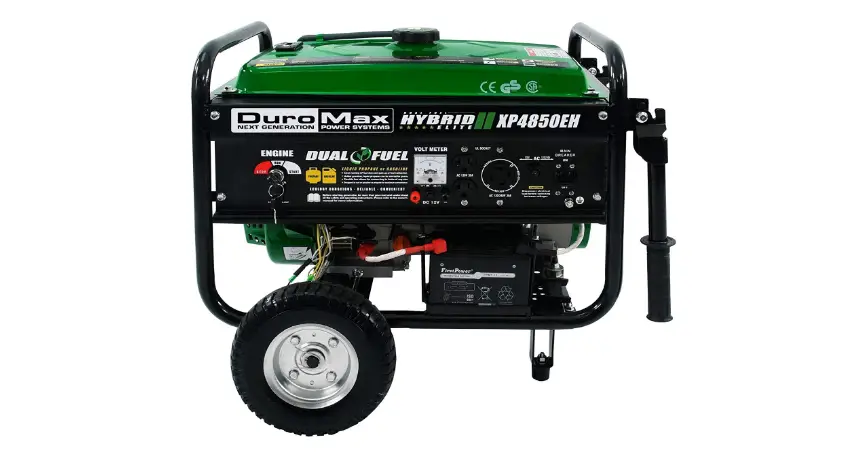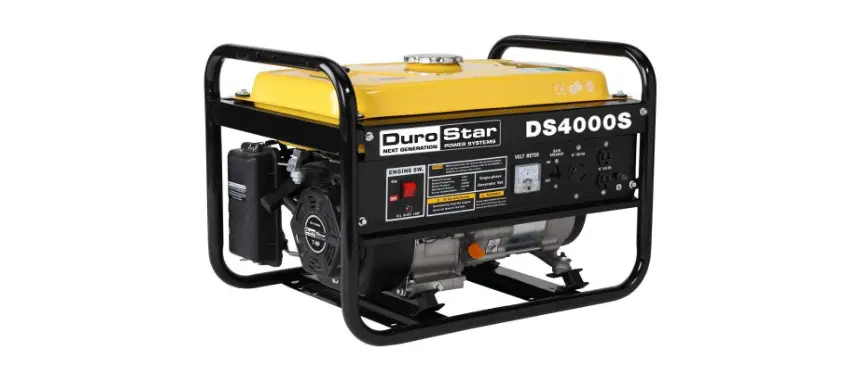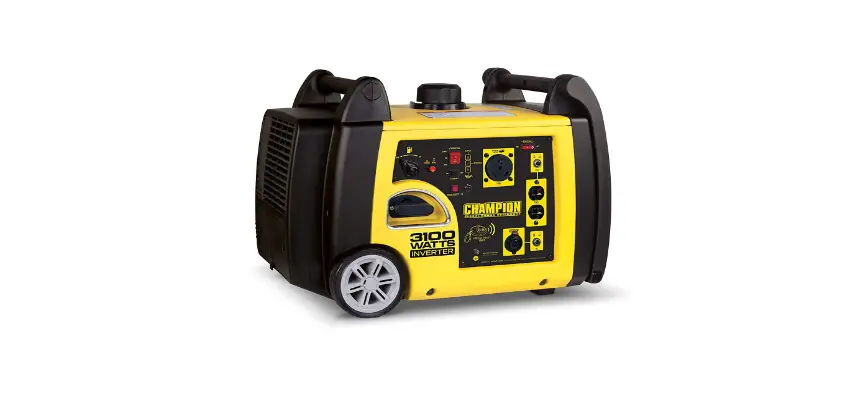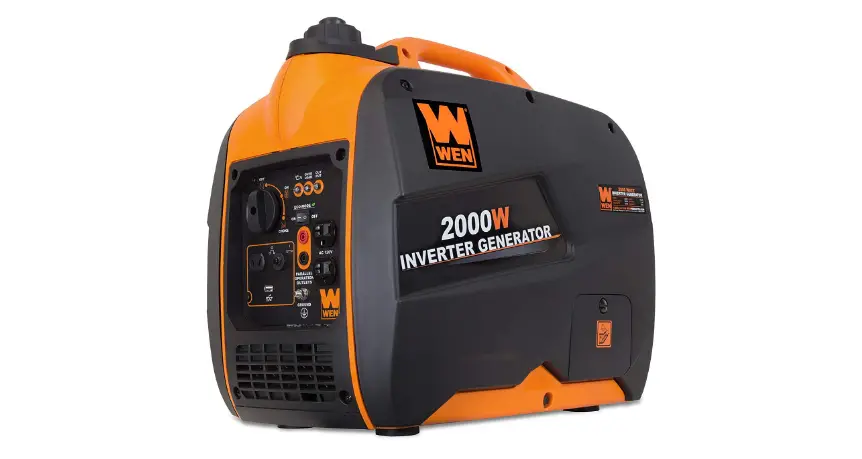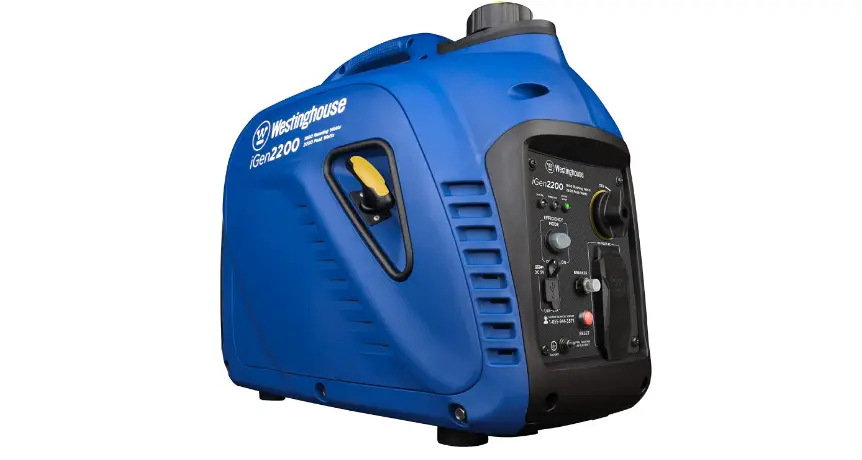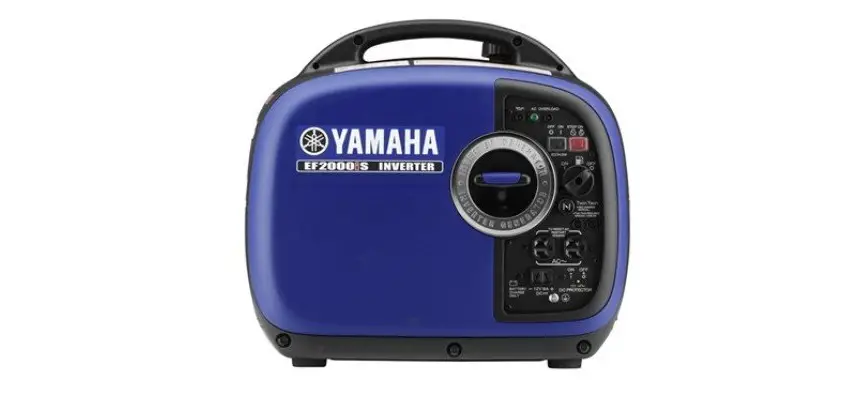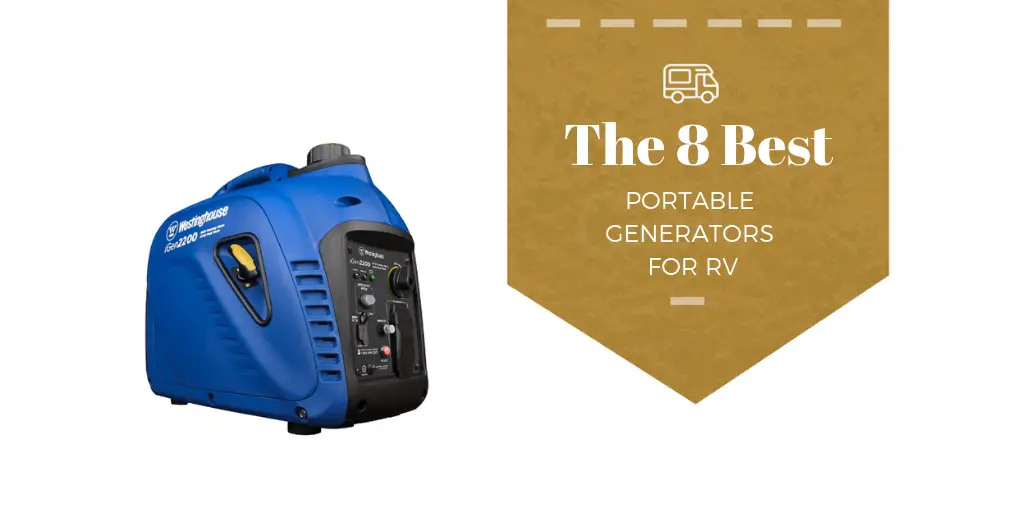
8 Best Portable Generators for RVs
When you are camping or traveling in an RV, you might often come across power cuts and blackouts. These can happen for a number of reasons such as power shortage in your campground, lightning and thunder, and various other reasons.
In these situations, it is necessary to have a portable generator that can continue powering your RV and all its appliances. However, you can’t just get any portable generator. You need one that’s suitable for your RV and your specific needs.
A portable generator can power your RV’s appliances such as TV, lights, batteries, grills, etc when there’s a power cut. They can be used during camping and tailgating as well.
Most of these generators work on propane or gasoline, though you can also find some solar-powered portable generators on the market.
Gas-powered portable generators should ideally be used in conjunction with a fuel stabilizer to prevent corrosion and rusting. Solar-powered generators generally take 6 to 12 hours to charge by solar panels.
There are two types of generators commonly used in campers and RVs- conventional and inverter. Most models produced today can be moved around by an average adult as the smaller ones weigh less than 45 lbs and use combustion engines to drive an alternator. But there are also differences between the two.
The conventional generators usually come with a bigger engine but are also noisy and can’t vary the engine speed based on the power demand. On the other hand, the inverter-type tends to be half as powerful as the conventional ones but are less noisy and can vary their engine speed, making them more fuel efficient.
Here is my list of the top products on the market today:
Table of Contents
1. Champion 3800-Watt Dual Fuel RV Ready Portable Generator with Electric Start
This generator can produce 4750 starting watts and 3800 running watts. It comes with an electric ignition switch, a battery, and a pull cord to start the engine manually.
You can use either propane or gas with the Champion 3800 and there is a selector switch for the type of fuel you are using. A propane hose and a regulator are included, and all you need to add is a propane tank. Do keep in mind that you must have the selector switch in the right position when you do this, or you risk damaging the internals of the engine.
The engine uses 10W-30 oil and also comes with an oil sensor. This means that the generator will automatically stop running if the sensor detects that the oil level is below the minimum. It protects the engine from damage caused by low oil pressure. It’s quite a useful feature especially when you run the unit for a long time.
The control panel comes with push-to-reset circuit breakers and an automatic voltage regulator (AVR) for power surge protection, along with a volt guard technology. In the unlikely case that the AVR fails, it prevents sudden high voltages from reaching the appliances.
For output, there are four outlets and all are 120V and 60Hz. You get a 30A RV receptacle, a 20A locking outlet, and two 20A household outlets. It’s quite a versatile generator that can power most RVs and mobile homes, although it can’t power appliances that require more than 120V to operate.
When in use, you should keep this generator outdoors and there’s a cover for protection (but you need to buy it separately). If you have it in your garage or shed, keep it at least three feet away from other things. It comes with a pair of wheels, which is helpful in moving the unit around.
The fuel tank holds 3.4 gallons of pump gas and it lasts for about nine hours of continuous use. With a 20 lb. propane tank, Champion states that it lasts for 10.5 hours of continuous use but some users have reported going even beyond that.
Even tough as this portable generator is, it is quite compact. It is not a very quiet one (about loud as a lawnmower), so you may want to be considerate about your sleeping neighbors at the campsite.
And if you don’t use it on a daily basis, Champion recommends you let the generator run for 30 minutes every two weeks. This keeps the battery charged and also lengthens its shelf life.
Pros
- Fueled by propane or pump gas
- Low oil shut-off sensor prevents engine damage
- Hose, regulator, battery, and wheel kit are included
- Can be started manually
- Voltguard technology protects your appliances
- Versatile power outlets
Cons
- Can’t be operated indoors
- 120V appliances only
- Noisy
2. Champion 3500-Watt RV Ready Portable Generator
The next generator on our list is also from Champion. The generator can produce 4000 starting watts and 3500 running watts. You can only ignite the engine by pulling the cord, so it’s less convenient compared to generators that work with the push of a button. That said, you don’t need a battery to operate this generator.
It only runs on gas and there is no input for propane, unfortunately, which is also commonly used in many generators.
Like other Champion generators, it comes with a sensor that detects if the engine oil level is too low and the generator will immediately stop running. Lubrication problems are typical in engines that run continuously, and it’s good to have to prevent damage. Champion recommends using 10W-30 oil for optimal performance.
The control panel displays a pair of push-to-reset circuit breakers and an automatic voltage regulator to protect against voltage spikes. Champion’s Volt Guard technology is included in this unit, so it doesn’t allow high voltages to reach your appliances in case of a power surge. This is especially useful if you have different appliances all connected at once. There is also a voltmeter beside the circuit breakers.
During operation, you have to keep it outdoors or in an area that isn’t fully enclosed to avoid the buildup of carbon dioxide, and you also have to maintain at least three feet of space around the generator and the wall. There have been cases where people have died from CO2 poisoning, so don’t take this lightly!
The Champion 3500 comes with is a cover to protect it from the elements, but it is a separate purchase. The wheels are a separate purchase as well, which is somewhat disappointing because other equally powerful generators come with them.
As for output, all four outlets are rated for 120V and 60Hz. You get a 30A RV receptacle, a 20A locking outlet, and two 20A household outlets. They all have a cover, and it’s a neat little bonus for protecting power outlets.
The fuel tank has a capacity of 3.8 gallons and lasts for 10 – 12 hours of continuous use. As a less powerful generator, it is not as noisy and annoying (only 68 dBA) as some other Champion models. You can still hear a steady hum, but it’s hardly noticeable when you are inside the RV.
Pros
- Low oil shut-off sensor prevents engine damage
- Volt Guard technology protects your appliances
- Versatile power outlets
- Not as noisy as more powerful generators
Cons
- Manual start only
- Can’t be fueled by propane
- Can’t be operated indoors
- Wheel kit is a separate purchase
- 120V appliances only
3. Duromax XP4850EH Dual Fuel Electric Start Portable Generator
The generator can produce a maximum of 4850 watts and the operational power is at 3850 watts. You ignite the engine using a key, similar to how you would start a car, or you can crank it manually, with the pull cord included.
This generator is fueled by either propane or gas, and comes with a regulator and a hose for the propane tank. It also comes with a toolkit that includes several wrenches, a screwdriver and a funnel with a clear tube. In case you can’t find it right away, look underneath the fuel tank; sometimes it is tucked in there. The kit is very useful when setting up the unit for the very first time.
Duromax recommends using 10W-30 oil for best performance, but the real trouble I had with this generator is the oil drain plug. It is located less than an inch away from the metal frame and is really difficult to drain the old oil without spilling it, so beware.
When it comes to the power outlets, there is a 120V/240V 30A socket with a switch, two 120V 20A household sockets, and a positive and a negative 12V DC socket. Do keep in mind that you can’t connect an RV receptacle directly, and you must get the adapter separately.
There is only one circuit breaker for all outputs, which is not ideal. But at least, there is an oil alert light and a voltmeter included in the control panel.
If you need to move the unit around, it is quite hefty. Thankfully, wheels are included. The manual says that the wheels don’t need to be inflated, but they actually should be if you want to move it with ease. It is not a big deal, just somewhat misleading to the customer.
The fuel tank can hold up to 4 gallons of gas, which lasts about eight hours non-stop. For a 20 lb. propane tank, Duromax says that it can last for about 12 hours, but it can go for longer than that.
Because you get a versatile set of power outlets, this generator can be used in multiple ways. You can even power your whole house because some of the bigger appliances rely on 240V to work.
Pros
- Can be started manually
- Fueled by propane or pump gas
- A toolkit, a hose, a regulator, and wheels are included
- Versatile power outlets
Cons
- Adapter is needed for RV receptacle
- Can’t be operated indoors
- Noisy
4. DuroStar DS4000S Gas Powered Portable Generator
The generator can produce a maximum of 4000 watts and the running power is rated at 3300 watts. It is fueled by gas only and you can’t use propane, which tends to last longer. You can only ignite the engine with a pull cord, but it works remarkably well. In most cases, a single pull is enough.
The manual recommends that you use 10W-30 oil, but it also states that it’s ideal to replace the oil after every 20 hours of use. I don’t know about the rest of you, but I don’t know anyone who does this. Perhaps it is meant for peak performance, but in real life, it is simply too impractical.
The Durostar generator comes with a toolkit (open-ended wrenches, a screwdriver, and a spark plug wrench), and it’s really useful when you first set it up.
There are two 120V 20A household sockets and a 120V 30V twist-lock socket, but you need a separate adapter if you want to power your RV. There is no DC output, so you can’t directly connect small appliances or electronics to this generator. It comes with a single circuit breaker for all the sockets, as well as a voltmeter.
There is also an oil alert light and the generator automatically shuts down when the oil pressure is below minimum.
There is a minor design flaw in my opinion regarding the location of the oil cap. It is inconveniently placed, and the oil tends to drain directly on the steel frame. Fortunately, the oil cap has a dipstick so you can check the oil level when you need.
This generator is rather heavy (102 lbs), but you can attach wheels to make it easier to move around. Once again, you need to buy them separately.
The fuel tank has a capacity of 4 gallons, which lasts up to 8 hours of continuous use. But if you only have a handful of appliances connected to it, the fuel takes more time to deplete.
When your RV is connected to the generator, it actually isn’t as noisy as others with the same power output. It is not completely silent, but when indoors, it is not distracting at all.
Pros
- Shuts off immediately when oil pressure is low
- Tool kit is included
- Versatile power outlets
- Not as noisy as more powerful generators
Cons
- Manual start only
- Can’t be fueled by propane
- Can’t be operated indoors
- Wheels are a separate purchase
- 120V appliances only
5. Champion 3100-Watt RV Ready Portable Inverter Generator with Wireless Remote Start
Another generator from Champion that I can recommend is this inverter-type generator that can produce up to 3100 starting watts and 2800 running watts. The engine runs on gas and the fuel tank has a capacity of 1.6 gallons.
For the engine oil, Champion recommends using a 10W-30 oil for smooth performance. A low oil shut-off sensor detects the oil pressure and the generator shuts off automatically if the pressure is below the minimum. It’s a safety feature that is good to have to protect the engine’s internals.
There is a battery and a wireless remote included, and you can turn the unit on from a distance without having to press the switch on the control panel. Keep in mind, though, that you have to turn on the battery switch first before you can control it wirelessly.
The handles and wheels make this unit portable and easy to move around. The control panel has a 120V RV outlet, two 120V house outlets, and a 12V DC outlet. There is a circuit breaker for the hose and DC outlets and a choke for the carburetor.
With its array of outlets, this model can provide electricity for a mobile home, camper or even a small cabin. However, you can’t power appliances that require more than 120V.
This product is energy efficient and offers excellent fuel economy due to its Smart Economy Mode. Because the engine speed is directly proportionate to the power load in an inverter-type generator, it is more efficient in consuming fuel than many other generators on the market.
Noise levels are also lower (less than 60 dBA) compared to conventional generators, and you don’t have to annoy your fellow campers, as it is about as loud as a group of friends having a conversation.
The battery charges when you leave it turned on during operation. For a full charge, it lasts up to two weeks with eight hours of use per day. That is a testament to its increased fuel efficiency since for the conventional generators with a similar output to last the same time, they would need bigger fuel tanks.
Pros
- Comes with a battery and wireless remote
- Low oil sensor protects the engine from damage
- Compact and portable
- Better fuel efficiency
- Versatile power outlets
- Not as noisy as conventional generators
Cons
- Can’t be operated indoors
- 120V appliances only
6. WEN 56200i Portable Inverter Generator
This inverter-type generator by WEN runs on gas only, and the fuel tank can hold up to one gallon of fuel. It has a maximum output of 2000 watts with a running output of 1600 watts, and you can only ignite the engine using the pull.
On the control panel, there are two 120V 20A household outlets, a 12V DC outlet, and a 5V USB port. Only the DC sockets have a circuit breaker, which is a little odd because it’s usually AC outlets that have them. The choke dial has three settings (on, off, choke), so you can control how much fuel goes in the engine.
The unit is compact (18 x 11 x 18 in) and is the same size as a small cooler. It weighs just below 30 pounds, so it’s as portable in a duffle bag and pretty much any adult should be able to lift it.
You can’t have it running indoors, however, since it releases carbon dioxide, and do keep in mind that 10W-30 oil should be used with this generator.
You should be able to keep most of your appliances connected simultaneously with this generator and on a full tank, it lasts for about 10 hours non-stop. The Eco mode adjusts the fuel consumption automatically, depending on the power load, which helps to save fuel.
Like other inverter-type generators, this one is less noisy than conventional generators. WEN also sells the specific wire kit you need if you want to run several generators together.
Pros
- Compact and portable
- Versatile power outlets
- Not as noisy as conventional generators
- Better fuel efficiency
- Can run in parallel
Cons
- Manual start only
- Can’t be operated indoors
- 120V appliances only
7. Westinghouse iGen2000 Inverter Generator
This inverter-type generator can produce a maximum of 2200 watts with the operational power is 1800 watts. It runs on gas only and the fuel tank has a capacity of 1.2 gallons. There is no electric start, however, and you can only start it with the pull cord.
Westinghouse recommends that you use 10W-30 oil for best performance, and the manual suggests that you change the oil after the first 20 hours of use and then after every 50 hours.
There are two 120V 20A household outlets and two 5V DC USB ports. The choke dial has three levels (off, run, choke) to control the air-fuel ratio in the carburetor. There is a warning light for low oil pressure and overload.
The unit is lightweight (less than 45 lbs) and portable and comes with an impressive 3-year warranty.
A full tank of fuel should last about 12 hours of continuous use, and its Efficiency Mode will adjust the fuel consumption, depending on the power load on the generator.
Smaller Westinghouse generators are also capable of running in parallel, in case you need more power, and luckily this is also one of them. Keep in mind that it will only run with another generator of the exact same model and you need proprietary wire from the manufacturer for that.
Pros
- Compact and portable
- Versatile power outlets
- Not as noisy as conventional generators
- Better fuel efficiency
- Can run in parallel
Cons
- Manual start only
- Can’t be operated indoors
- 120V appliances only
8. Yamaha EF2000iSv2, 1600 Running Watts/2000 Starting Watts, Gas Powered Portable Inverter
This inverter-type generator by YAMAHA can produce a maximum of 2000 watts and the continuous power produced is 1600 watts. You can only use gas to fuel it, and the tank has a capacity of 1.1 gallons. There is no electric start, unfortunately, but you don’t have to yank the pull cord more than twice to get it running.
Yamaha recommends that you use either 10W-30 or 10W-40 oil for best performance. After the first 20 hours of use, you should change the engine oil. Then, you change it every 6 months or after every 100 hours of use, whichever comes first.
The unit comes with two 120V AC household sockets and a 12V DC charger for batteries. Only the DC output has a circuit breaker. The choke switch is right next to the Economy Mode switch and below is the fuel shut-off valve, which helps prevent clogging if don’t use the generator for an extended period.
There is also a warning light for overload and indicating low oil. The generator automatically shuts down when the oil pressure falls below the minimum, and it’s a great safety feature to have not found in some older models.
This generator has a nice compact design and is made to look like an over-sized lunch box in my opinion. You can grab it by the handle, and it’s fairly easy to lug around as it weighs below 45 lbs.
Yamaha has greatly improved the muffler on this generator,so it is quieter than some older models. At 50-50 dBA, you can still hear a humming sound, but it’s not annoying at all.
A full tank of fuel lasts about eight hours when continuously running, but if you spend most of your day outside and you don’t use a lot of appliances, the fuel could last until the next morning due to Economy mode.
You can also run two of these generators together, if you need more than 1600 watts, but you don’t want to get a bigger one. (You do still need the proprietary cable to connect the units together). I think it is more convenient to have a couple of these instead of one huge one, because the portability and fuel efficiency are also better.
Pros
- Compact and portable
- Versatile power outlets
- Not as noisy as conventional generators
- Better fuel efficiency
- Can run in parallel
Cons
- Manual start only
- Can’t be operated indoors
- 120V appliances only
Which Factors to Consider when Buying RV Portable Generators?
The following are the main factors to consider when buying RV portable generators.
Power
The most important factor when it comes to portable generators is the power output in watts. If you need to power simple appliances like TV and lights, a portable generator with a power output of 5,000 watts should suffice. However, if you need to use several different heavy appliances like refrigerators, air conditioners, or space heaters, you’ll probably need a lot more power.
You can determine your power needs by adding up the total watts of all your essential appliances. Doing so will help you determine how much power you need. And then get a portable generator that can provide more power than that so you can add a few more appliances as well, if necessary.
Weight
An RV portable generator should be lightweight so you can easily carry it in and out of your RV whenever necessary. Furthermore, you might be using it for camping purposes as well, so it should be light enough to carry around.
Wheel Kit
Some portable generators come with a wheel kit. Those are ideal for use in RVs because a wheel kit instantly makes the generator a lot easier to carry around. You should, however, note that generators with wheel kits are usually pretty expensive.
Noise
Generators are generally powered by gas. As such, like all other gas-powered devices, they can be noisy. You should, however, try to find a portable generator that creates as little noise as possible. This is important because the generator will be with you inside the relatively narrow confines of an RV, so it shouldn’t be too loud or the passengers will be pretty annoyed.
Automatic Start
Portable generators with an automatic start get triggered whenever the power goes off. These aren’t entirely necessary because RVs aren’t that large and you can just as well walk over and turn them on. But it makes things a little more convenient.
Electric Start
Most portable generators have a pull-switch that you need to trigger to get the engine working. However, some generators come with an electric start button that you simply need to push. These are a lot more efficient as you don’t have to struggle with the pull-switch.
Alternative Power Sources
Most portable generators run on gasoline. However, some alternative sources of power include propane gas, natural gas, or solar power. All of them come with their unique advantages and disadvantages, though gasoline and propane tanks are most easily available.
Fuel Gauge
It’s important to have a clear fuel gauge that’s visible even in the dark. It will allow you to see how much fuel you have left even during long blackouts.
Safety Considerations when Handling RV Portable Generators
RV portable generators can be dangerous if you’re not careful. The following safety recommendations will help you remain safe.
Preventing Carbon Monoxide Poisoning
The exhaust from portable generators releases a deathly invisible and odorless gas called Carbon Monoxide. To prevent carbon monoxide poisoning, you should install your generator in a location with plenty of ventilation.
Furthermore, you should keep all your windows open when you’re using a portable generator and install a ventilation fan to disperse the carbon monoxide. You should also install a carbon monoxide alarm that can alert you if the CO levels reach dangerous levels.
Preventing Gas Leaks
Gas — of any kind — is flammable in nature. So you have to be extremely careful with it. When you’re filling the portable generator with fuel, leave some space to allow it to expand. This can also prevent the fuel from entering the engine and causing a fire. You should also avoid adding fuel when the generator is working or is heated up.
Moreover, when you’re storing generators, you should make sure they don’t have any fuel as they can be released in the form of vapors that can cause an explosion if there’s so much as a stray spark.
RV Portable Generator Location Consideration for Safety
- Keep your generator away from locations frequented by kids or pets.
- There should be at least 5 feet of clearance from surrounding objects.
- Don’t install it somewhere it would be exposed to rain.
- Install the generator outside the RV.
- The generator should be placed on an even surface.
- When not in use, the spark plug should be kept clear from the portable generator.
Conclusion
I hope this article has helped you figure out how to go about buying the best RV portable generator for your needs.



